Increase of Neisseria meningitidis W:cc11 invasive disease in Chile has no correlation with carriage in adolescents
- PMID: 29518095
- PMCID: PMC5843251
- DOI: 10.1371/journal.pone.0193572
Increase of Neisseria meningitidis W:cc11 invasive disease in Chile has no correlation with carriage in adolescents
Abstract
Neisseria meningitidis is a human exclusive pathogen that can lead to invasive meningococcal disease or may be carried in the upper respiratory tract without symptoms. The relationship between carriage and disease remains poorly understood but it is widely accepted that decreasing carriage by immunization should lead to a reduction of invasive cases. Latin America has experienced an increased incidence of serogroup W invasive cases of Neisseria meningitidis in the last decade. Specifically in Chile, despite low total incidence of invasive cases, serogroup W has become predominant since 2011 and has been associated with elevated mortality. Expecting to gain insight into the epidemiology of this disease, this study has used molecular typing schemes to compare Neisseria meningitidis isolates causing invasive disease with those isolates collected from adolescent carriers during the same period in Chile. A lower carriage of the serogroup W clonal complex ST-11/ET37 than expected was found; whereas, the same clonal complex accounted for 66% of total invasive meningococcal disease cases in the country that year. A high diversity of PorA variable regions and fHbp peptides was also ascertained in the carrier isolates compared to the invasive ones. According to the results shown here, the elevated number of serogroup W invasive cases in our country cannot be explained by a rise of carriage of pathogenic isolates. Overall, this study supports the idea that some strains, as W:cc11 found in Chile, possess an enhanced virulence to invade the host. Notwithstanding hypervirulence, this strain has not caused an epidemic in Chile. Finally, as genetic transfer occurs often, close surveillance of Neisseria meningitidis strains causing disease, and particularly hypervirulent W:cc11, should be kept as a priority in our country, in order to prepare the best response to face genetic changes that could lead to enhanced fitness of this pathogen.
Conflict of interest statement
Figures
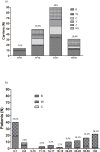
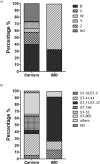
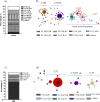
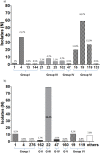
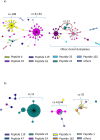
References
-
- Swain CL, Martin Dr, Sim D, Jordan TW, Mackichan JK. Survival of Neisseria meningitidis outside of the host: environmental effects and differences among strains. Epidemiol Infect [Internet]. 2017;1–10. Available from: https://www.cambridge.org/core/product/identifier/S0950268817002473/type... - PMC - PubMed
-
- The Institute of Environmental Science and Research Ltd. Notifiable Diseases in New Zealand: Annual Report 2016. 2017;(September).
Publication types
MeSH terms
Substances
Grants and funding
LinkOut - more resources
Full Text Sources
Other Literature Sources
Medical

